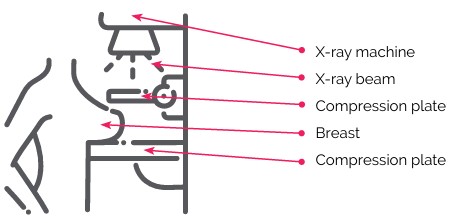By continuing to use our site, you consent to the processing of cookies, user data (location information, type and version of the OS, the type and version of the browser, the type of device and the resolution of its screen, the source of where the user came from, from which site or for what advertisement, language OS and Browser, which pages are opened and to which buttons the user presses, ip-address) for the purpose of site functioning, retargeting and statistical surveys and reviews. If you do not want your data to be processed, please leave the site.
The Voice of People With Breast Cancer
Information
Breast Cancer Basics
Screening
Finding breast cancer early gives you the best chance for successful treatment. Breast cancer can be diagnosed before symptoms appear or after noticeable changes develop. Healthcare providers use physical exams, imaging, and biopsies to detect breast cancer.
If you notice any changes in your breasts, contact your doctor. Not all breast changes indicate cancer, but further evaluation is needed. Signs to watch for include:
- A lump or thickening in the breast or underarm
- Changes in breast size, shape, or skin texture (dimpling, redness, or swelling)
- Unexplained breast pain
- Nipple changes, such as pain, inversion (turning inward), or discharge (clear or bloody)
- Sores or irritation on the nipple or areola
- Swelling or enlarged lymph nodes under the arm or around the collarbone
Breast Self-Awareness (BSA)
BSA focuses on knowing what’s normal for your breasts so you can recognize changes and report them to your provider. Unlike traditional breast self-exams (BSEs), BSA does not require a specific technique or routine.
- Observe your breasts regularly (e.g., while dressing or showering)
- Report any new lumps, discharge, or skin changes to your provider
- BSA can be done at any time, but some prefer checking monthly after their period
- Structured self-exams may not be necessary unless risk factors are present
Screening Methods
Regular screening can help detect breast cancer early, when it’s most treatable. The most common screening tool is the mammogram, an X-ray of the breast that can find tumours before they can be felt. In some cases, ultrasound or MRI may be used as additional tools, especially for people at higher risk or those with dense breasts.
A mammogram is a specialized X-ray that detects changes in breast tissue, such as small lumps or calcifications that cannot be felt by hand. Mammograms are considered safe, as they use low-dose radiation.
Types of Mammograms
-
Screening Mammography: Used to detect breast cancer in people without symptoms. It helps monitor changes in breast tissue over time and identify cancer at an early stage.
- Diagnostic Mammography: Uses more detailed imaging to detect abnormalities. See Diagnosing Breast Cancer for more information.
Screening Guidelines
Screening recommendations vary based on your age and risk level. Access to routine breast screening also changes based on where you live in Canada:
- Most provinces start screening at age 40 or 50
- Screening is recommended every 2 years until the age of 75
- After 75 years old, talk to your doctor about whether to continue screening
If you are under 40: Routine screening is not usually recommended unless you are at higher risk. If you have a strong family history, dense breasts, or a known genetic mutation, talk to your healthcare provider about starting earlier.
If you are over 75: There is no automatic cutoff, but screening decisions should be based on your overall health and personal preferences. Discuss your options with your healthcare provider.
Visit mybreastscreening.ca or contact your provincial breast screening program to learn more about eligibility and how to book an appointment.
If you have dense breasts, or high-risk conditions, your screening plan may be different:
- Visit our Dense Breasts section to learn more about your options
- Visit our High-Risk Conditions section for information on earlier or more frequent screening
Related reading from Our Voices Blog:
Medical Review by Roochi Arora, MD, FRCPC, August 2025
- References
-
Canadian Breast Cancer Network. (2022). Breast cancer and you: A guide for people living with breast cancer [PDF]. https://cbcn.ca/web/default/files/public/
Reports/Breast%20Cancer%20and%20You_
ENG_edit_web.pdfCanadian Cancer Society. (2024). Screening for breast cancer. https://cancer.ca/en/cancer-information/cancer-types/breast/screening
Canadian Cancer Society. (2024). Mammography. https://cancer.ca/en/treatments/tests-and-procedures/mammography
Canadian Task Force on Preventive Health Care. (2024). Breast cancer: Draft recommendations for screening. https://canadiantaskforce.ca/breast-cancer-update-draft-recommendations/
My Breast Screening. (2024). Your comprehensive guide to breast cancer screening in Canada. https://www.mybreastscreening.ca/wp-content/uploads/2024/07/DBC-Screening-Guide_draft15_optimized.pdf
SHARE





